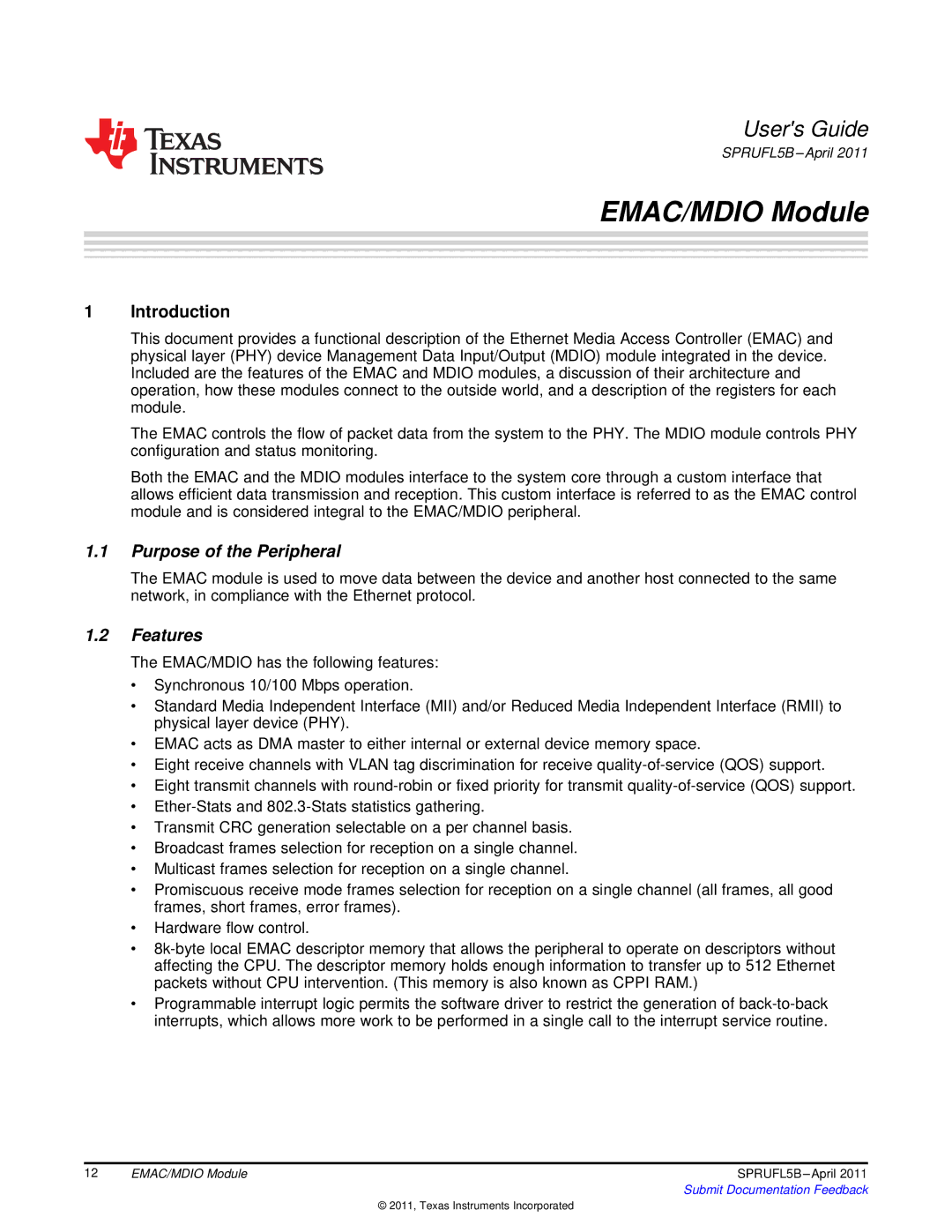
User's Guide
SPRUFL5B – April 2011
EMAC/MDIO Module
1Introduction
This document provides a functional description of the Ethernet Media Access Controller (EMAC) and physical layer (PHY) device Management Data Input/Output (MDIO) module integrated in the device. Included are the features of the EMAC and MDIO modules, a discussion of their architecture and operation, how these modules connect to the outside world, and a description of the registers for each module.
The EMAC controls the flow of packet data from the system to the PHY. The MDIO module controls PHY configuration and status monitoring.
Both the EMAC and the MDIO modules interface to the system core through a custom interface that allows efficient data transmission and reception. This custom interface is referred to as the EMAC control module and is considered integral to the EMAC/MDIO peripheral.
1.1Purpose of the Peripheral
The EMAC module is used to move data between the device and another host connected to the same network, in compliance with the Ethernet protocol.
1.2Features
The EMAC/MDIO has the following features:
•Synchronous 10/100 Mbps operation.
•Standard Media Independent Interface (MII) and/or Reduced Media Independent Interface (RMII) to physical layer device (PHY).
•EMAC acts as DMA master to either internal or external device memory space.
•Eight receive channels with VLAN tag discrimination for receive
•Eight transmit channels with
•
•Transmit CRC generation selectable on a per channel basis.
•Broadcast frames selection for reception on a single channel.
•Multicast frames selection for reception on a single channel.
•Promiscuous receive mode frames selection for reception on a single channel (all frames, all good frames, short frames, error frames).
•Hardware flow control.
•
•Programmable interrupt logic permits the software driver to restrict the generation of
12 | EMAC/MDIO Module | SPRUFL5B |
|
| Submit Documentation Feedback |
© 2011, Texas Instruments Incorporated
